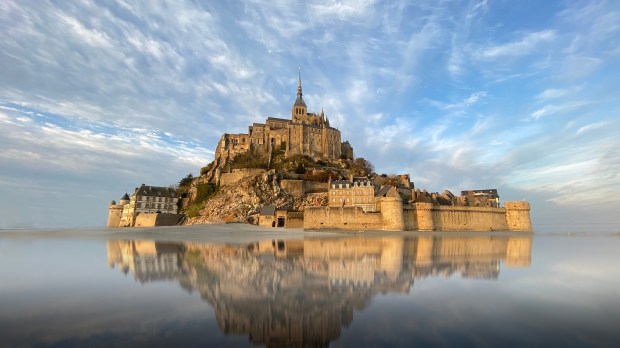Most people planning a pilgrimage in Europe will probably think of the Camino di Santiago or the Via Francigena. But another destination must be included among a list of Europe’s most beloved holy walks: a pilgrimage to Mont Saint-Michel in France.
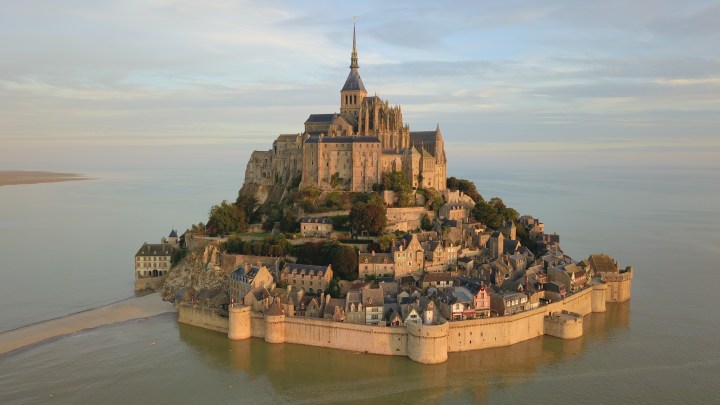
History of Mont Saint-Michel
The iconic Abbey built on top of a rocky tidal island in Normandy, Northern France, has been attracting pilgrims since as early as the at least the 16th century.
The history of Mont-Saint-Michel began in 708, when Bishop Aubert erected a first sanctuary on Mont Tombe in honor of the Archangel Michael. According to tradition, the bishop received three visits from St. Michael in which he asked him to dedicate a shrine in his name on the site. The island was later renamed Mont Saint-Michel, and in 966 became the home of Benedictine monks who built a monastery there. Known as “City of Books,” Mont-Saint-Michel was also a center of great learning, and the repository for a large number of manuscripts and books.
The massive fortifications around the Abbey were built during the Hundred Years War between France and England. After the French Revolution, the Abbey was transformed into a prison. In 1969 a small community of Benedictine monks returned to the Abbey, and were later replaced in 2001 by the Monastic Fraternities of Jerusalem.
Planning a walking pilgrimage
Today, the Association of Saint Michel Walks (“Les Chemins du Mont Saint-Michel”) provides maps and information on paths that connect the 16th-century Gothic Abbey with other holy places dedicated to St. Michael across Europe, from Belgium to England, with the longest path (1,100 miles) starting in the first sanctuary dedicated to St. Michael in Gargano (southern Italy).
The most popular of the paths is probably the one that starts in Ruen, the capital of Normandy, and ends in Genêts, the coastal town that overlooks the tidal island of Mont Saint-Michel. This 223-mile path goes through a variety of landscapes, from sparsely populated rural areas to thick forests and takes on average 15 days to complete logging 12.4 miles per day. For those of you looking for a shorter route, it’s possible to walk the last stretch of this pilgrimage starting in the town of Caen and reaching the final part of the path at Genêts.
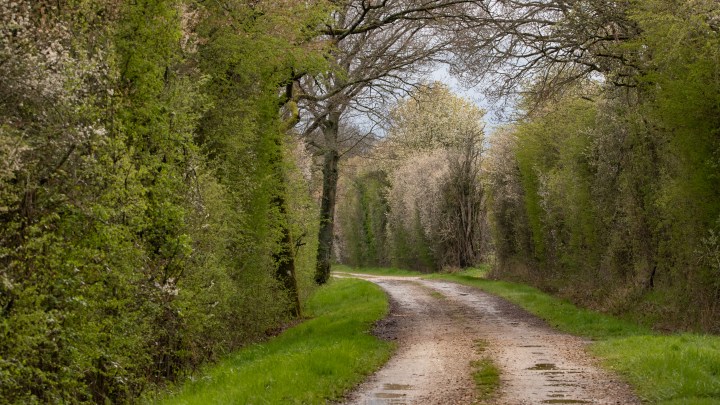
The website of the Association of Saint Michel Walks provides precious resources to all the “Michelots” who come to Normandy to walk the path of Saint Michel. Here you can find the entire path from Ruen mapped on Google Maps. The first map details the route from Saint Catherine hill, just above Rouen, to Falaise, while the second map marks the path from Falaise to Genets.
Accommodations for pilgrims
Much like travelers on the Camino de Santiago, pilgrims can get a special pilgrim passport that gets stamped as each step of the way is completed. The Association of Saint Michel Walks provides a detailed guide to accomodation options (in French, but links are provided). Catholic travelers would particularly be drawn to accommodation provided by monasteries located along the way, such as the 12th-century Benedictine monastery in Le Bec Hellouin (to arrange overnight stays email maisondeshotes@abbayedubec.org) or pilgrim hostels such as the one in the village of Val-Couesnon. The municipalities of Saint Médard and Nieul sur l’Autise reportedly provide rooms for pilgrims as does the tourism office of the town of Surgères.
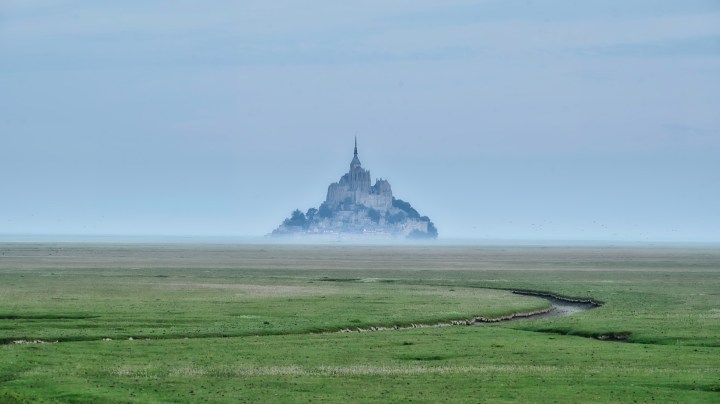
Know your tides!
Once you reach the town of Genêts, it is probably best to hire a guide in order to complete the last part of the pilgrimage safely. It is here in Genêts that pilgrims can finally spot the striking profile of Mont-Saint-Michel on the horizon. But crossing over requires a knowledge of local tides and their timing. During low tide, the island can be reached via foot by walking through the sands of the salt marshes, while during high tide that’s not possible.
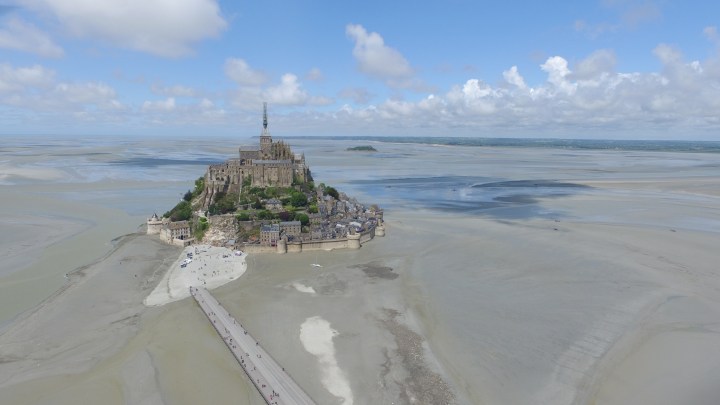
Visiting the Abbey of Mont Saint-Michel
Once you make it over to the island, take the path on the left of the main gate towards Porte Échauguette for a walk along the ramparts of the Abbey and then make your way up to the Abbey along the church of Saint Pierre that houses a silver statue of the Archangel Michael. Visiting the Abbey itself costs 10 euros, but it’s surely worth it as it is one of the most striking examples of Gothic architecture in existence. The best view of the bay is from the Terrasse de l’Ouest.
After a few hours of exploration of the tiny island of Mont Saint-Michel, created thanks to a solidified magma that emerged from underneath the ground some 525 million years ago, you can decide to go back to the mainland for the night or to stay over. The first option is cheaper, but the second one is more charming.
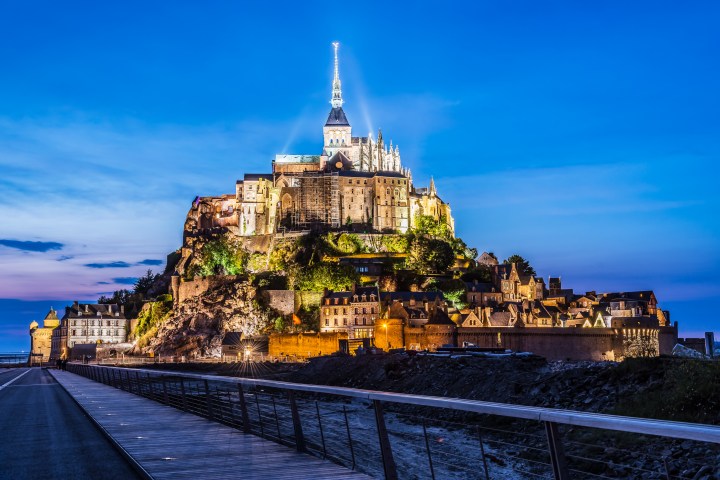
Staying overnight on the island itself
Crowds can make it hard to appreciate the peace and spirituality of the centuries-old Abbey, but most people leave after sunset, allowing for a more authentic experience of this UNESCO World Heritage site at night. Staying overnight also allows you to observe the tidal flooding, a phenomenon that happens between low tide, when Mont Saint-Michel is connected to the mainland, and high tide, when it becomes an island. Tides can rise very fast, at three feet per minute, a true force of nature that further underlines the mystical atmosphere of the Abbey. In terms of accommodation, you can find rooms at the Auberge Saint Pierre. Only a couple of restaurants serve the visitors to the island, so bringing your own food can save some money.
The best months to visit Mont Saint Michel and Normandy are probably between May and October, with a grand Mass in honor of St. Michael celebrated on September 29.
